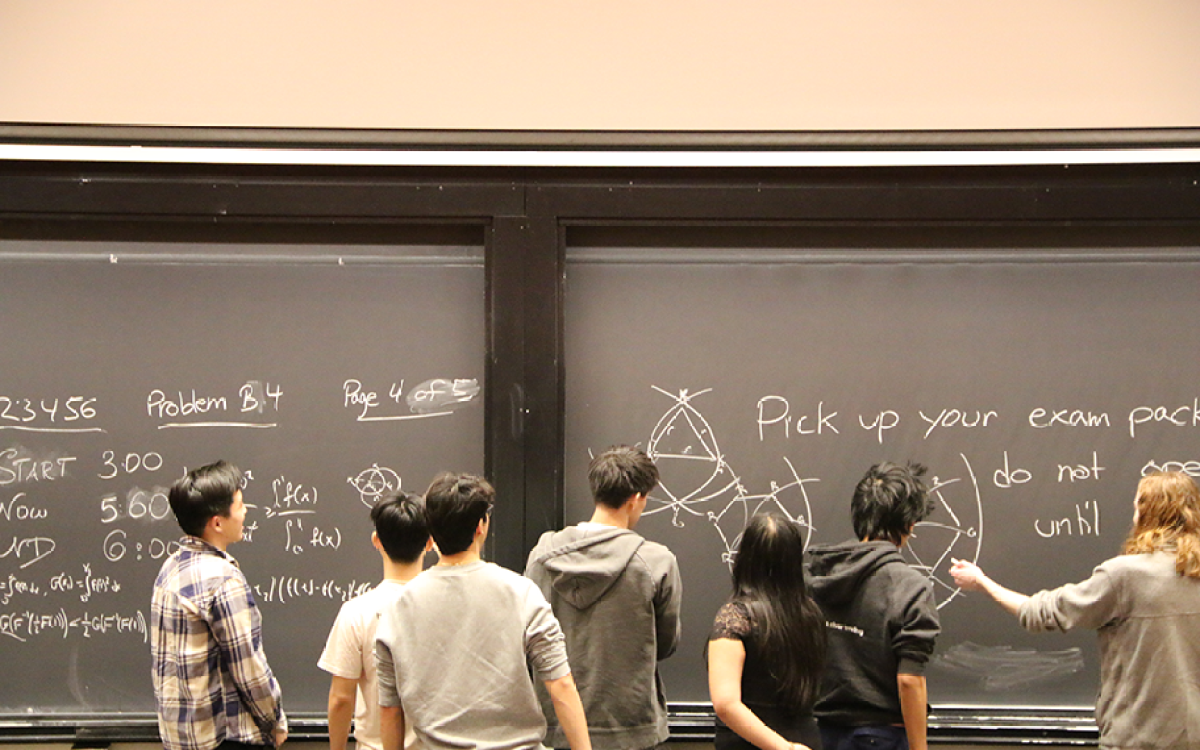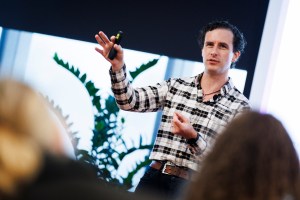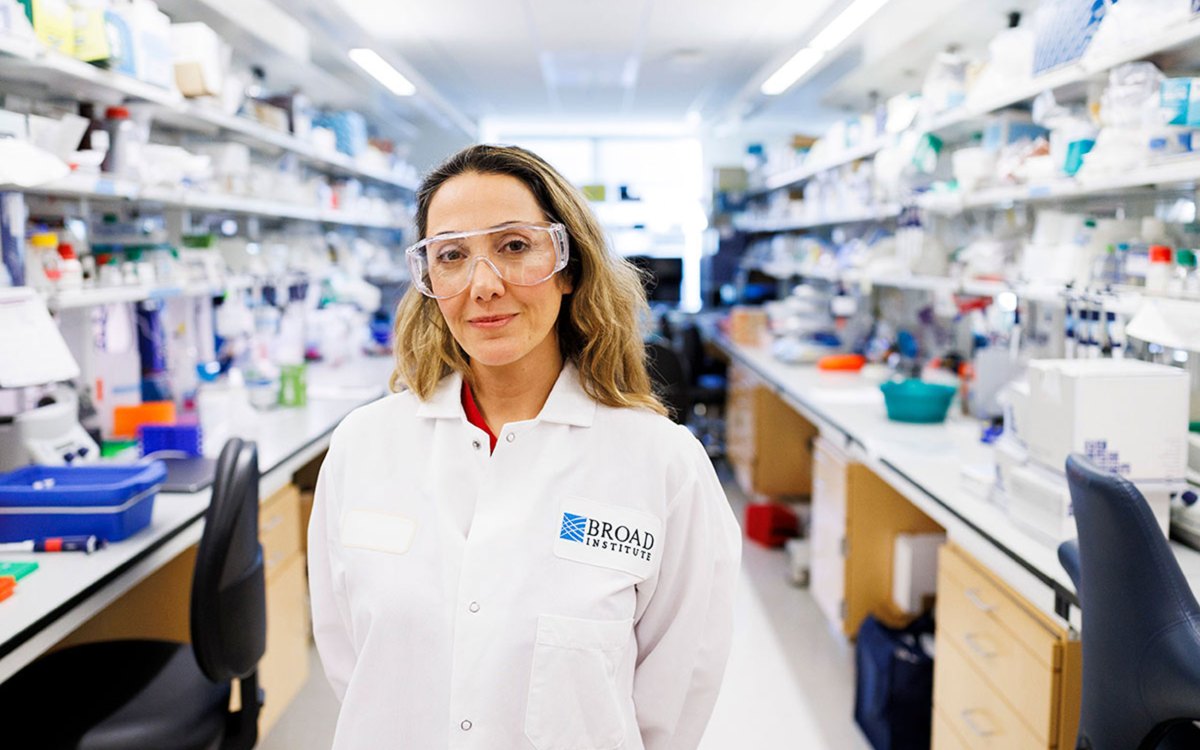No one knows the answer, and that’s the point
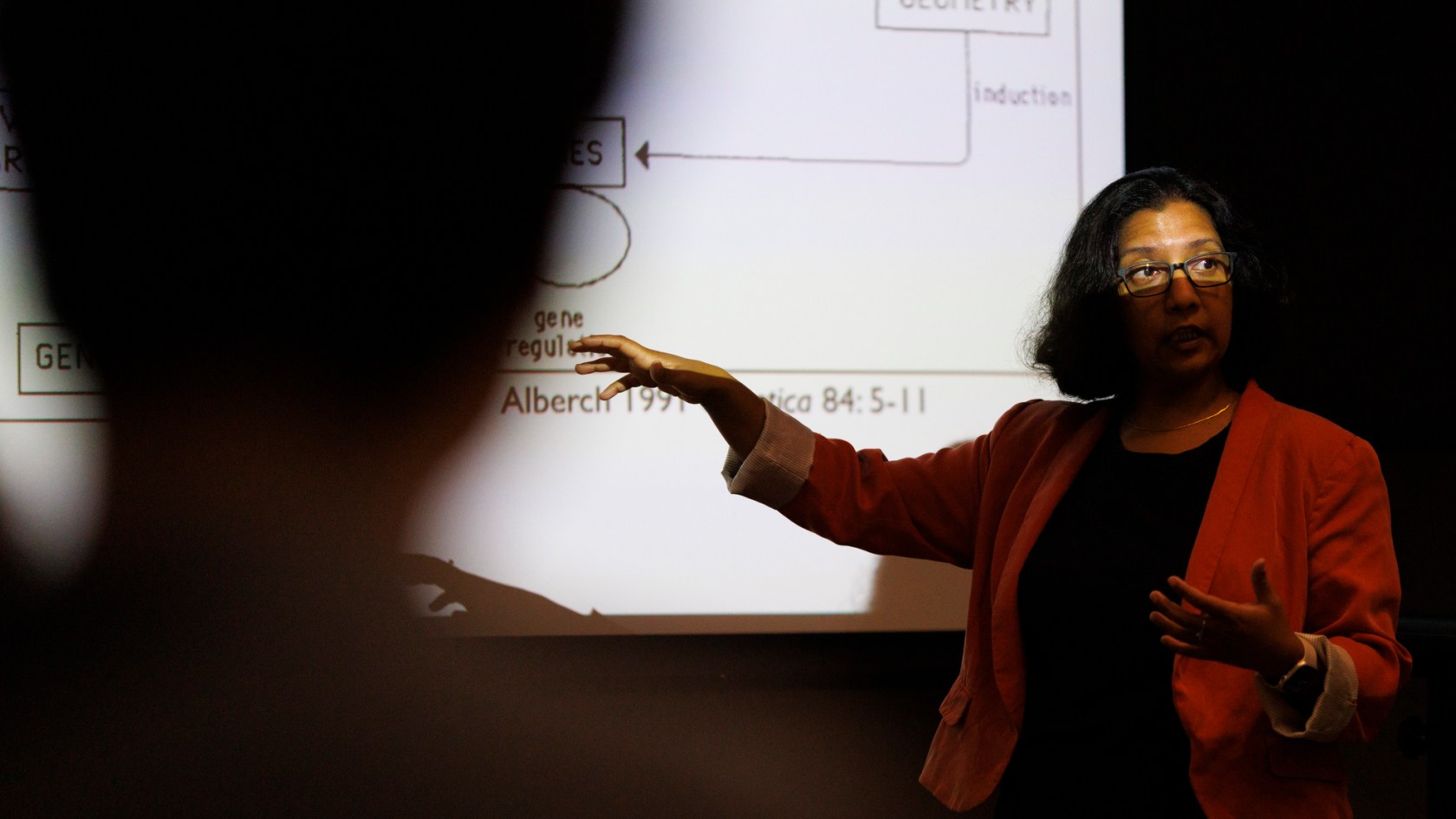
Mansi Srivastava.
Photos by Veasey Conway/Harvard Staff Photographer
‘Genuinely Hard Problems’ pilots novel approach to scientific education
A few weeks after their arrival at the College, 15 first-year students settled into chairs for an unusual class — one with no answers.
The brainchild of Dean of Science Jeff Lichtman, “Genuinely Hard Problems in Science” explores mysteries of the natural world that have stubbornly resisted the best efforts to crack them. How did life emerge from non-biological matter? How did single cells evolve into complex life? What mechanisms drive the aging process — and can they be reversed? What is the relationship between brain anatomy and mental illness?
In this class, there is no assumption that scientific authorities are right. Rather than training conformists who follow their elders down well-worn routes — and possibly to dead ends — the instructors want out-of-the-box thinkers who can blaze new pathways.
“What we’re trying to do,” explained Lichtman, “is transform science, 15 students at a time.”
“What we’re trying to do is transform science, 15 students at a time.”
Jeff Lichtman
‘A new narrative for undergraduate education’
“Genuinely Hard Problems,” or GHP as it’s become known in the division, seeks to pilot a new approach to a scientific landscape that has been reshaped by technology.
Traditional scientific education is designed to develop expertise in one discipline. But today anybody with a smartphone can instantly retrieve vast amounts of scientific information. Artificial Intelligence performs some tasks with speed and accuracy no human can match.
“Depth of expertise and knowledge in the traditional sense are far less valuable perhaps than they once were,” said Logan McCarty, associate dean of science education, who is co-teaching the class with Lichtman. “If you need to learn a specific task or a specific concept, you now can turn to ChatGPT.”
Indoctrination within one narrow discipline can confine a scientist, McCarty noted — and lead them into blind alleys from which they cannot escape. Indeed, the historian of science and philosopher Thomas Kuhn ’43, Ph.D. ’49, famously described scientific training as “a narrow and rigid education, probably more so than any other except perhaps in orthodox theology.”
“If you spend a 10-year career learning a specific skill and a specific task and becoming an expert in something, you tend to not want to jettison all of that knowledge and training,” said McCarty, a chemist who also teaches physics and applied math. “That’s where the dogma can actually trap you inside a particular way of thinking.”
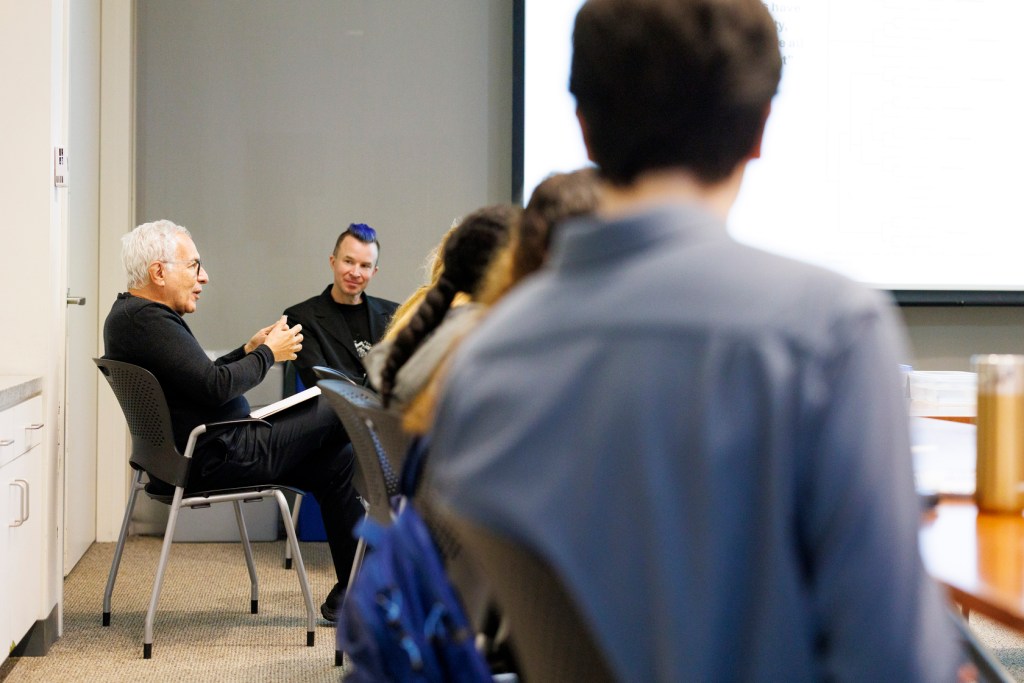
The seminar’s solution: catching first-years before their minds become shaped by orthodoxy. Lichtman and McCarty hope to instill students with a multidisciplinary, expansive outlook — thus emboldening them to peer over the walls of any maze.
“This class is sort of the tip of the iceberg of what we hope is a big reimagining of undergraduate science education,” said McCarty. “In some ways, this is about creating a new narrative for undergraduate education in the sciences. These students are our first cohort.”
About 160 incoming students applied for spots in the seminar. Fifteen were selected for the fall cohort, and another 15 will take it in the spring. Next year, Lichtman and McCarty will offer the class again and add sophomore programming, allowing current students to continue their journeys, possibly with advisers.
Genuinely Hard Problems are challenges that have stumped scientists despite decades of research. Solving them is not simply a matter of continuing to hammer away with current approaches. Instead, solutions require conceptual breakthroughs.
“It’s a very strange education because you’re not teaching kids facts,” Lichtman said. “You’re teaching them things that are not known. There is no textbook about the unanswered questions in science.”
“You’re teaching them things that are not known. There is no textbook about the unanswered questions in science.”
Jeff Lichtman
Learning to attack problems
Each week, GHP invites guest lecturers to class — Harvard faculty who conduct research into unsolved problems. Michael Segel, assistant professor of stem cell and regenerative biology, outlined the mysteries of why we age. Dan Freed, Shiing-Shen Chern Professor of Mathematics, presented the Millennium Prize Problems, a series of unsolved mathematical challenges. Dimitar Sasselov, Phillips Professor of Astronomy, and Adam Cohen, professor of chemistry, chemical biology and physics, presented the enigma of the origins of life on Earth. At the end of the semester, each student will pick a hard problem to study, possibly for the remainder of their undergraduate years, and instructors will match them with a mentor.
The course description intrigued Adam Stone, a first-year from Charlotte, North Carolina. “I thought that this class was really exciting for couple of reasons,” he said. “One is that you get a taste of all these different fields — biology, physics, math. I think the idea of trying to tackle something that no one knows the answer to is really exciting.”

Stone also was driven by personal motivation: He has Tourette syndrome, a neurological disorder that causes sudden, involuntarily movements. Like many other brain conditions, it remains poorly understood. “If you understand the framework of how to tackle these unsolved problems, you can apply that to so many things that that can really make a difference in people’s lives,” he said.
Likewise, Belén Franco de la Matta, from Northvale, New Jersey, was drawn by the opportunity to survey a broad array of sciences and work closely with a mentor. “Personally, I’m very interested in physics and mathematics, but at the same time, there’s so many valuable things that we can learn from other topics, such as biology or computer science,” she said. “In class, we’ve been talking about how in order to solve difficult problems, sometimes you can tackle them with the ways of thinking from other fields.”
Black holes and black boxes
In late September, Peter Galison, Joseph Pellegrino University Professor of History of Science and of Physics, gave the students a primer on his research into black holes. The discussion explored theoretical questions of how science balances prediction, explanation, and understanding.
“You said, in the beginning of your lecture, that the majority of things in science are a black box,” said Lucille Nomaguchi-Long ’29. “Do you think we’ll ever get to a point where we will be able to uncover all those black boxes, or even, fully understand one black box?”
We can go a long way toward understanding natural phenomena, answered Galison, but we also must resign ourselves that much will remain beyond our comprehension. “There’s almost no branch of science, none, that we can understand completely,” he said.
“There’s almost no branch of science, none, that we can understand completely.”
Peter Galison
Then Lichtman interjected another perspective: Often our understanding is just a “gloss” — a superficial explanation that distracts us from the more important goal of making accurate predictions.
“The ego of a person cares more about understanding than prediction,” said Lichtman, Jeremy R. Knowles Professor of Molecular and Cellular Biology. “But to make the world work, all that matters, I would argue, is prediction.”
Finding joy in the questions
A week later, the class took on yet another unsolved problem: How does genetic code translate into biology?
Mansi Srivastava, co-chair of the Department of Organismic and Evolutionary Biology, gave the lecture, recounting how a burst of optimism swept through her field when the first genomes were sequenced in the early years of the new millennium. People imagined the genome as a “blueprint” — a plan that could easily be translated into physiology and behavior. Those hopes were dashed when it became clear that the matter was far more complex. “We thought we would be able to solve it 25 years ago,” she said, “and we have been deeply humbled.”
Today, entire genomes can be sequenced, and scientists are beginning to decipher how the expression of genes can be modified by epigenetic effects during the lifetime of the organism. Despite those advances, we remain unable to fully translate genotype into phenotype. “Maybe this idea of a blueprint being some perfect instruction was never true,” Srivastava said. “Maybe we carried the analogy too far in thinking about genetics and development.”
Standing beside the projection screen, the professor posed a question to the class.
“Say I give you all the information — I can tell you how the environment impacts things, I can tell you all the epigenetic marks. Do you think even then we’d be able to predict the phenotype? Or is it hopeless?”
“Maybe some of it, yeah,” answered Rosa Kooijmans. “Not all of it.”
“I like your light of hope,” responded Srivastava. “Because if you don’t have hope, then we might as well go home.”
Her advice to students: Spend time thinking carefully about how to define your questions of interest. The road will be long, so learn to find joy in the questions.
“You find your path, because that’s the big task that I want you to solve in the next four years,” said Srivastava. “Or maybe in the next 30 years of your careers.”
